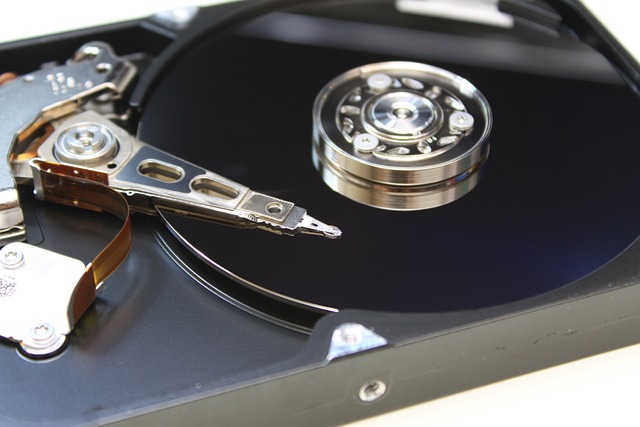Understanding the difference between partitions and volumes is essential for any computer user, especially if you work with data storage. Knowing how to create and manage these components can help you optimize your device’s performance and improve its efficiency.
What is a partition?
(Image by PublicDomainPictures from Pixabay)

A partition is a logical division of a hard drive that separates it into smaller, more manageable sections. Think of it like slicing up a pie – each slice represents its own partition with its own designated space and function.
Partitions are created during the formatting process when setting up a new hard drive or adding storage to an existing one. They can be used for various purposes such as separating system files from user data, organizing different operating systems on the same computer, or isolating sensitive information from the rest of your files.
Each partition is assigned a unique letter (i.e., C:, D:, E:) in Windows or mounted at specific locations in Unix/Linux systems. This allows you to easily identify and access each section without interfering with other partitions.
It’s important to note that while partitions provide organization and flexibility, they do not increase overall storage capacity. In fact, creating too many small partitions may actually lead to wasted space due to file size limitations and allocation inefficiency.
What is a volume?
(Image by MH Rhee from Pixabay)

In computer storage, a volume is a logical unit of data that can be accessed by the operating system. It could refer to an entire disk or just a portion of it. A volume can span across multiple physical disks and may use various file systems.
One example of a volume is when you format your external hard drive as one partition with NTFS file system, assigning it one letter (e.g., E:). This means that all files saved on this specific drive will be stored in this particular volume.
Volumes are essential because they allow us to organize and manage our data efficiently. By creating different volumes for specific types of data, we can easily locate what we need without having to search through numerous folders and subfolders.
Moreover, volumes provide disk space allocation flexibility since users can add or remove them according to their needs. They also offer better fault tolerance and reliability since if one volume fails, only the corresponding data would be lost instead of risking losing everything else on the same disk.
Understanding volumes is crucial in managing our computer’s storage effectively.
Partition Vs. Volume – Key differences
When it comes to managing storage on your computer, you may have heard the terms partition and volume thrown around. While they may seem similar at first glance, there are some key differences between the two.
A partition is a logical division of a hard drive or other secondary storage device into separate sections. Each section functions as its own independent unit with its own file system and directory structure. Partitions can be used to organize data, create multiple bootable systems on one device, or restrict access to certain files or folders.
On the other hand, a volume refers to any accessible portion of storage space on a disk or other physical media. This can include partitions, but it also encompasses unpartitioned space as well as virtual volumes created by software like disk images.
One major difference between partitions and volumes is that partitions are typically created during initial disk setup while volumes can be added and removed dynamically without affecting existing partitions. Additionally, while all partitions are technically volumes in their own right, not all volumes necessarily correspond to individual partitions.
Understanding these distinctions is important when managing your computer’s storage resources effectively. By knowing how partitioning and volumizing work together (and separately), you’ll be better equipped to allocate space where it’s needed most for optimal performance and data organization.
How to create a partition
Creating a partition is an essential task when you want to divide your hard drive into different sections. This process allows you to organize your data and files properly and keep them separate from each other. Here’s how to create a partition:
- First, access the Disk Management tool by typing “diskmgmt.msc” in the Run dialog box or searching for it in the Start menu.
- Once there, locate the disk that you want to create a partition on and right-click on it.
- Select “Shrink Volume” option from drop down menu.
- In this new window, enter the amount of space that you would like to dedicate for your new partition in MB (megabytes).
- Click on “Next” button after selecting appropriate size then click “Finish”.
- You will now see unallocated space which can be formatted as per requirement with help of Right Click > New Simple Volume.
- Select Partition Style as MBR/GPT depending upon system configuration.
By following these simple steps, creating a new partition becomes quick and easy!
How to create a volume
Creating a volume in your computer system can be done in different ways, depending on the operating system you are using. In Windows 10, for instance, creating a volume is an easy task that involves just a few clicks.
Here’s how to create a new volume:
1. Go to “Disk Management” by right-clicking on the Start menu and selecting it from the list.
2. Locate the unallocated space or free disk space that you want to convert into a new volume.
3. Right-click on the unallocated space and select “New Simple Volume.”
4. Follow the wizard prompts and specify the size of your new volume, assign it a drive letter, choose file format options (NTFS is recommended), and name your new partition.
Once you’ve completed these steps, you’ll have created a new volume that will appear as an additional drive in Windows Explorer.
If you’re using Mac OS X or Linux operating systems, there are other methods available to create volumes based on their specific requirements.
What is the difference between simple volume and primary partition?
When it comes to managing storage space on a computer, the terms “simple volume” and “primary partition” may sound similar but are actually quite different.
A simple volume is a basic type of disk storage that can be created from unallocated disk space or by deleting an existing partition. It acts as a single unit and exists within a dynamic disk. Simple volumes can be extended or shrunk, provided they have enough contiguous free space available.
On the other hand, a primary partition is one of up to four partitions that can be created on a basic disk. It contains file systems such as NTFS or FAT32 and serves as the main location for storing data. A primary partition cannot span multiple disks and requires at least one active bootable system partition to start up the operating system.
While both simple volumes and primary partitions serve different purposes, they both play important roles in optimizing your computer’s storage capacity. Depending on your needs, you may choose one over the other when creating new disk storage spaces.
What is the difference between partition and volume in Linux?
In Linux, partitions and volumes are used to divide the storage space into logical units. A partition is a physical division of the hard disk drive, while a volume is created on top of one or more partitions.
One key difference between Linux partitions and volumes is that a single partition can only contain one file system, whereas a volume can have multiple file systems within it. This means that you can create different directories for each file system within the same volume.
Another difference lies in how they are accessed by the operating system. Partitions are mounted directly by the kernel, while volumes require an additional layer called Logical Volume Manager (LVM) to be mounted.
Moreover, unlike Windows where you need to assign drive letters to each partition or volume, Linux uses mount points instead. These mount points act as entry points from which users can access their data stored in the respective partition or volume.
Creating and managing partitions and volumes in Linux requires some technical knowledge compared to Windows since most operations must be done through command-line tools such as fdisk or parted rather than graphical user interfaces.
Understanding the differences between partitions and volumes in Linux is essential for proper management of your storage space.







